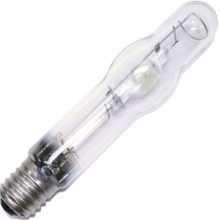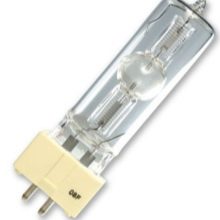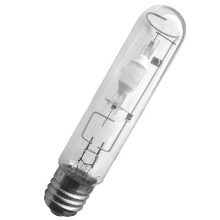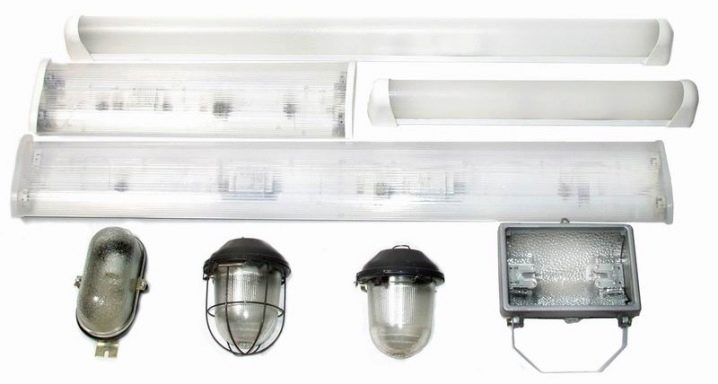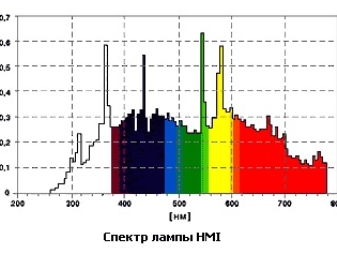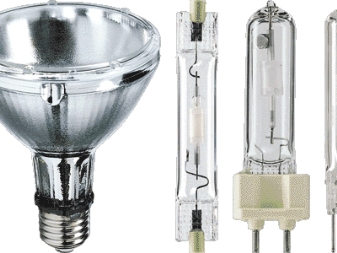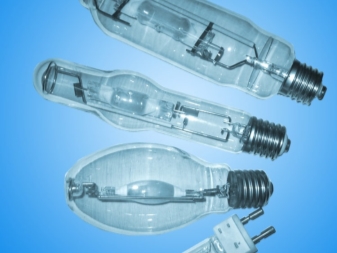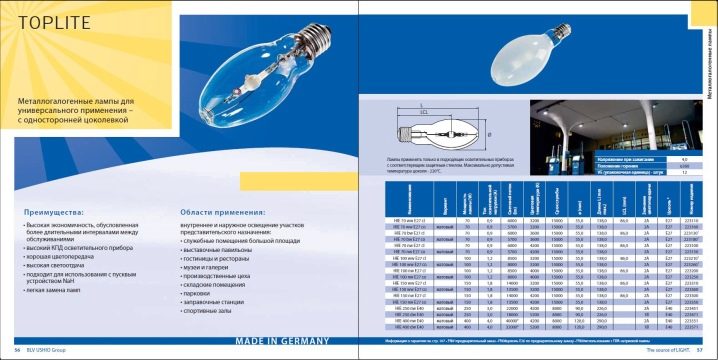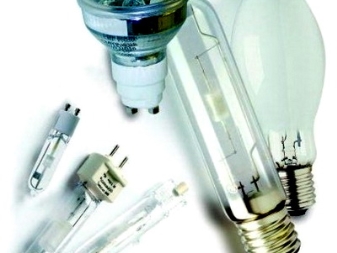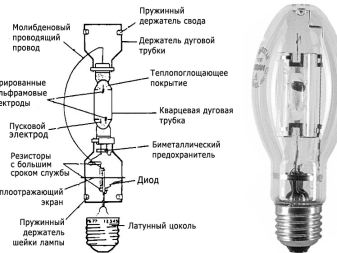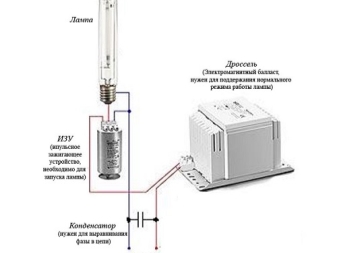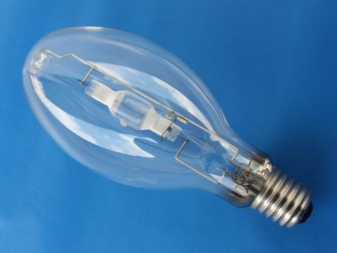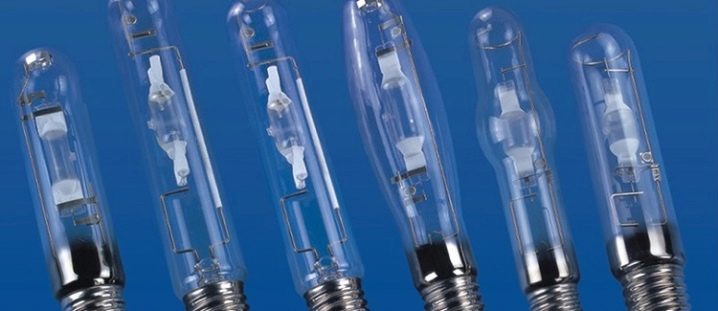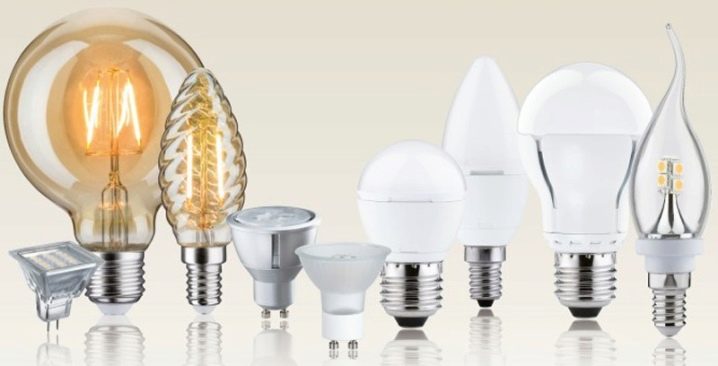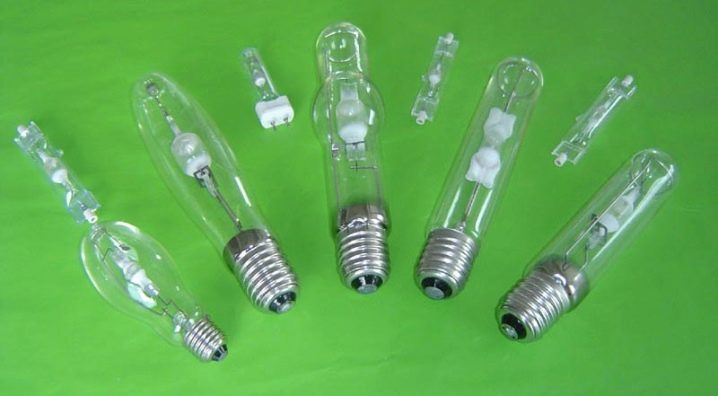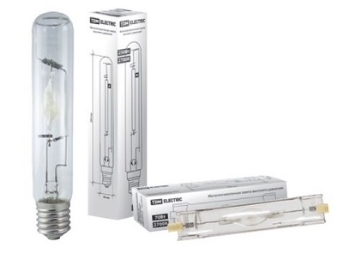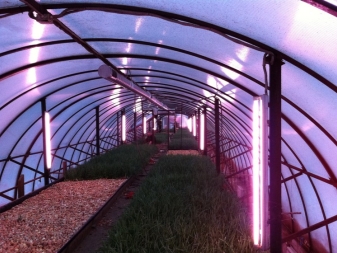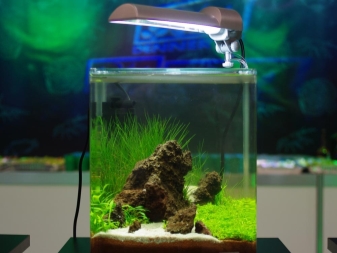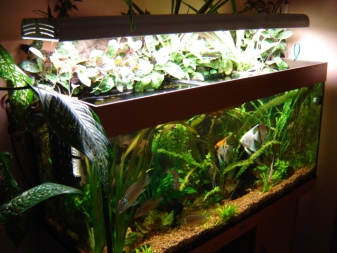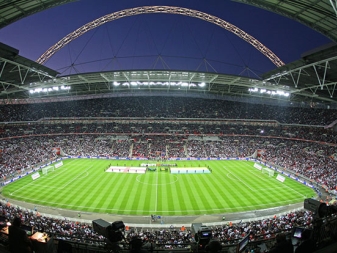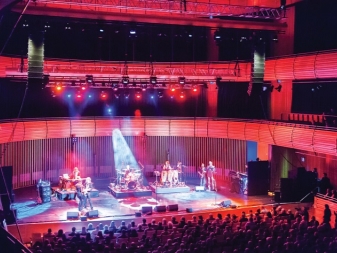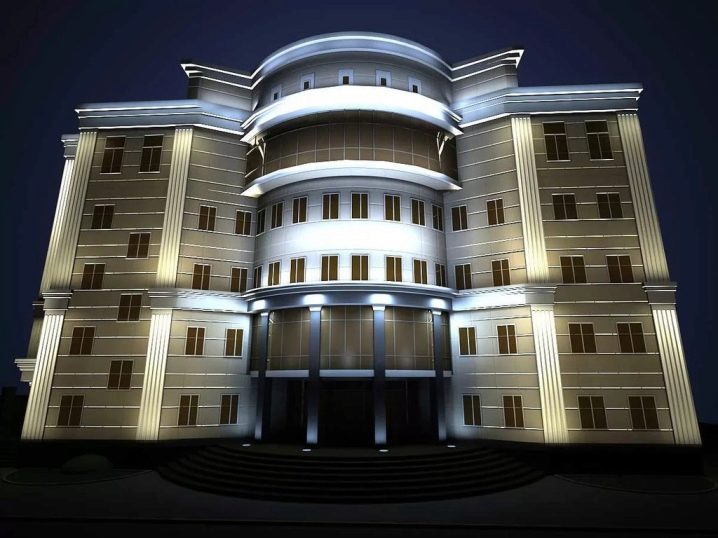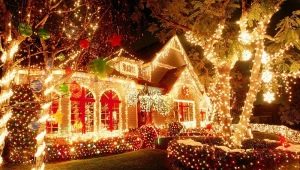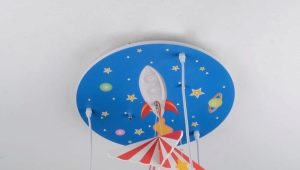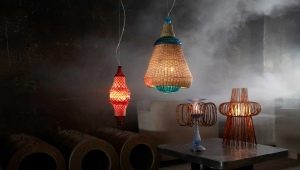Metal halide lamps: features and specifications
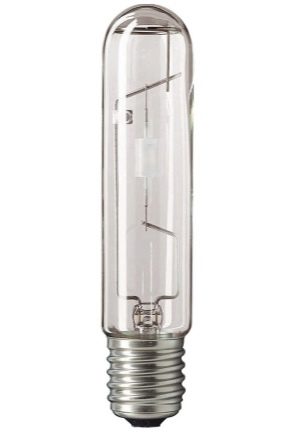
In a residential area or an office there is enough light bulb, the power of which varies from 60 to 150 watts. But they will be too dim for studio, decorative or street lighting. For this there are special metal halide lamps. Their features and characteristics are significantly different from other products, which is important to consider when choosing.
What it is?
Metal halide lamps (MGL) are gas-discharge light sources, which means that light is emitted due to electrical discharge in metal vapors. The key feature of such products - the use of special additives in the form of mercury vapor and halides of several chemical componentsthat are in a gaseous environment.
When the light bulb is not functioning, all additives are deposited on the surface of the burner. When heated, this "precipitate" begins to evaporate, accompanied by decomposition into ions. Ionized metal atoms in a state of excitation form the emission of light.
The radiation spectrum of metal halide lamps is quite wide - from warm to cold light, so they can be comfortable for lighting. In addition, such models are very economical, as they consume little electricity. Their lifespan is also worth - they work up to 15 thousand hours.
However, you should also take into account the shortcomings of these lamps. These light sources harmful to the human body due to the content of mercury and other chemical elements. And because of the substantial heat dissipation, their height is limited.
Types and characteristics
Metal halide lamps have different power, so there is always the opportunity to choose the best option for work and other things.
There are several types of such bulbs, the classification of which occurs depending on the following indicators:
- Power.For connection to an electrical network with a voltage of 220 volts, products with a capacity of 20 W and above, but not more than 2000 W, are used. Such lamps are used where the voltage reaches 380 volts.
- Radiated shades. This type of attribute can emit a colored luminous flux: blue, magenta, green, etc.
- Working position There are light bulbs that function only in one position: horizontal or vertical. However, there are universal models - they work in any position.
- Type of construction:
- Baseless. This type has no base, and its power ranges from 2 thousand to 3.5 thousand watts. The connection is due to flexible current leads.
- Single-capped. Among their great diversity, there are models that work only in a horizontal or vertical position, as well as those that normally work in both positions.
- Two-capped. Another name - soffit. Their flask is made of quartz, has a small size. They give light exclusively in a horizontal position.
The main characteristics of metal halide lamps are conventionally denoted by the letters DRI: arc, mercury, iodide light bulb.Some types have the letter “Ш” at the end (DRISH), which means the ball shape of the discharge tube. The following is the designation of power: 400, 700, 1000, etc. It turns out the following: DRI700.
Principle of operation
The heart of MGL is a quartz bulb, which manufacturers have often replaced with a ceramic one because of the material’s resistance to temperature extremes. This flask serves as a burner, surrounded by another flask - external.
The burner is filled with inert gases and impurities of metal halides necessary for the full emission spectrum (after all, mercury does not give all the colors). When the metal halide lamp turns off, the chemical components are deposited in a thin layer on the surface of the burner. When it turns on, it takes some time to warm up all the components. Vaporizing, mercury and other chemical elements emit light. Here, the external flask plays a very important role - it retains the heat, not allowing the structure to cool, and thereby extends the life of the burner itself.
Metal halide lamps are connected according to the rules, since the principle of operation and the construction of the attribute has its own characteristics (it has a voltage dependence).In particular, these products require the inclusion of a current limiting element (PRA).
Application options
The different power and wide color range of metal halide lamps make it possible to use them in the following areas:
- film studios;
- architectural structures;
- car lights;
- installations for lighting public buildings;
- scenes;
- railway stations;
- sports facilities, etc.
Lighting devices of this type can be very powerful, therefore they are used in industry and landscape design. Often these attributes are used as street lighting at night in parks, squares, to illuminate buildings, monuments, etc.
At the stadium metal halide lamps are indispensable devices. Circuses, shopping centers, advertising structures, arenas, office buildings - those facilities that require powerful lighting.
Lamps with MGL are favorable for plants, therefore can be used in greenhouses and hotbeds. In addition, they are great for aquariums.
Comparison with LED models
In the modern world, metal halide and LED light sources are gradually replacing incandescent bulbs from everyday life.These attributes save energy and provide excellent lighting, but there are significant differences between them. To clearly distinguish between them, you should consider the advantages of each of the lighting devices.
Advantages of IPF:
- high energy efficiency;
- large light output;
- excellent power;
- Uninterrupted operation of the product, regardless of the temperature in the room or on the street;
- the color rendition is as close as possible to sunlight, therefore it is comfortable for visual perception;
- small dimensions of products allow you to control its luminous flux.
LED attributes have their own advantages:
- low power consumption;
- lack of ultraviolet radiation;
- long service life;
- these are environmentally friendly models;
- resistant to impact;
- instant warming up
It is noticeable that the advantages of both bulbs quite a lot. Therefore, the crucial role is played by the disadvantages:
- IPM:
- high price;
- a change in voltage affects color reproduction;
- long time to warm up;
- harmfulness due to mercury content.
- LEDs:
- an unpleasant glow spectrum for reading literature and small work, but in this case it is necessary to select the right model;
- high price.
The main preference is given to LED attributes because of their safety and greater energy savings. In addition, they are more suitable for residential premises. Metal halide lamps are indispensable for scenes, industrial and public buildings, sports facilities and other similar structures.
How to check the health?
The operability of these lighting devices is checked simply: the lamp turns on with this lamp and its operation is observed. If interruptions are noticed, the product is faulty. The reason may be in the wrong connection or the bulb itself.
You should also check the mains voltage: if it does not reach 220 volts, MGL is unstable, which means it can ignite and go out, not warming up to full capacity.
If these attributes give poor illumination, you need to check the following:
- cable serviceability (it may be interrupted);
- correct installation of power in the track;
- correct connection to the panel.
Since MGL do not start without a ballast, which is used as a control gear (PRA), its serviceability is also checked. After all, it depends on the evenness of lighting.
If you find problems with MGL, you can replace them with LED. If metal-halide devices have high power, then instead of one such lamp two LEDs are used.
Shelf life
The service life of metal halide lighting attributes depends on several criteria:
- quality quartz burners;
- storage conditions of products;
- quality finishes;
- manufacturer.
Lamps of some companies can be stored for decades, other firms - much less, so the brand should also pay attention. The main thing is that the products themselves do not leak.
Another important point - creating the right conditions for the storage of IPF. At their observance attributes will be able to serve longer.
Examples and options
In a residential area, metal halide lamps are rarely used or not used at all due to their mercury content. However, they are an excellent lighting device in greenhouses and greenhouses. This is because plants need a special range of color rendering: red is necessary during the flowering and fruit set, and blue is for vegetative growth. True, in recent times, scientists have “insisted” that such artificial lighting in one tone serves as a stress for plants, and they need a different spectrum of light flux.This is how greenhouses and greenhouses are covered with IPF.
The aquarium is another place for a convenient location of metal halide lighting devices. These attributes cannot be replaced by others because of their undeniable advantages for aquariums:
- the required level of illumination, while saving energy;
- due to the point character of the source, the light rays reach to the very bottom;
- change the appearance of the aquarium: the picture is relief and contrast.
These lamps look in aquariums as follows.
In sports facilities and on the stages of the IPF looks a bit different.
Buildings are illuminated no less skillfully.
To learn how to connect a metal halide lamp, see the following video.
